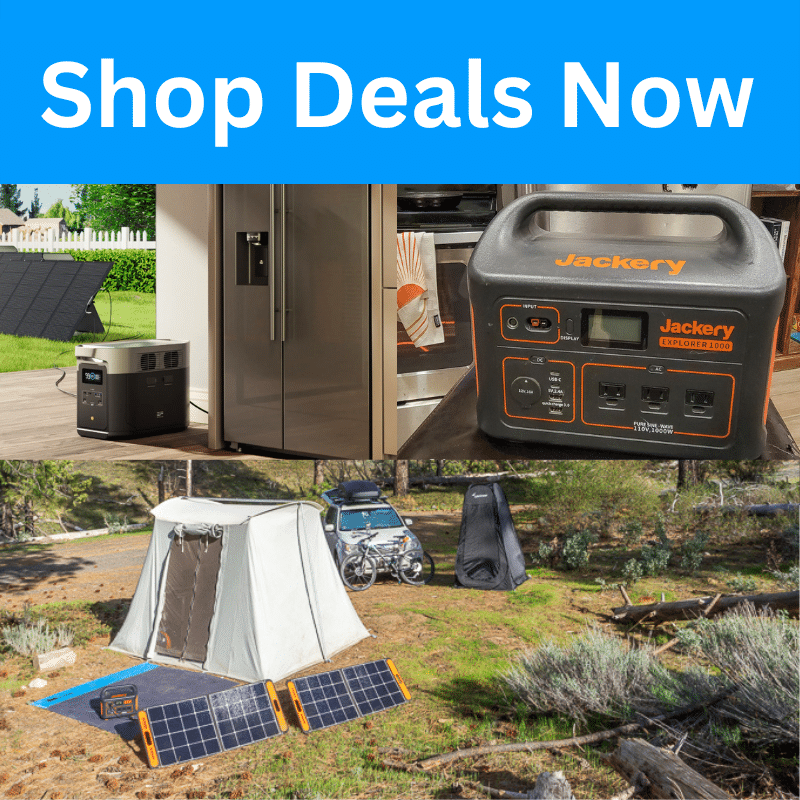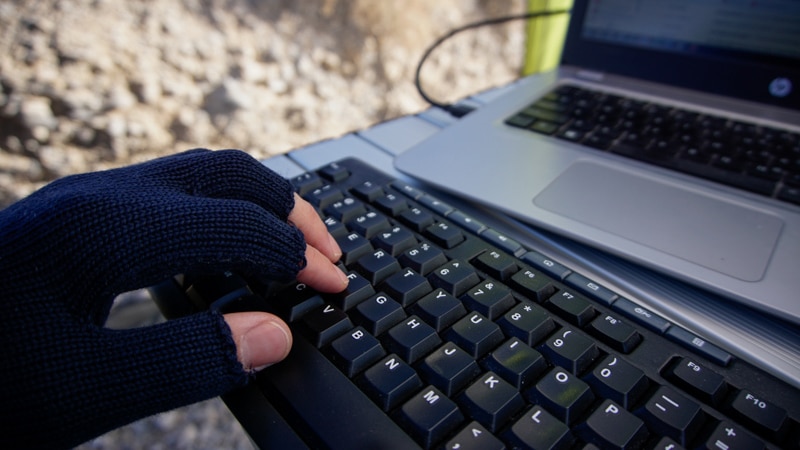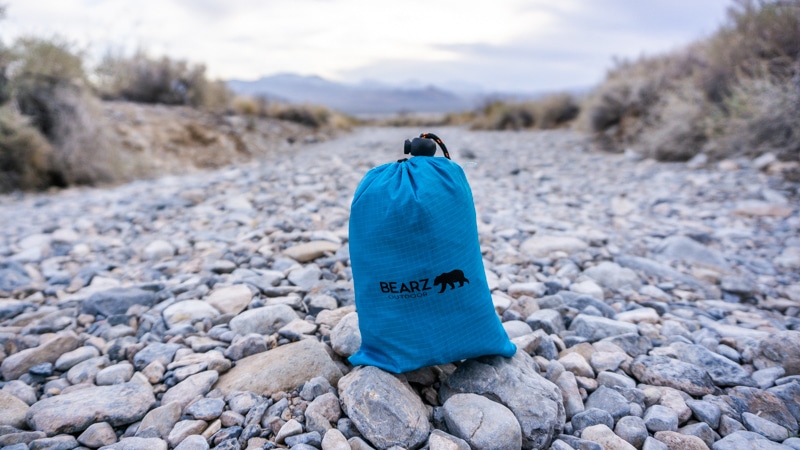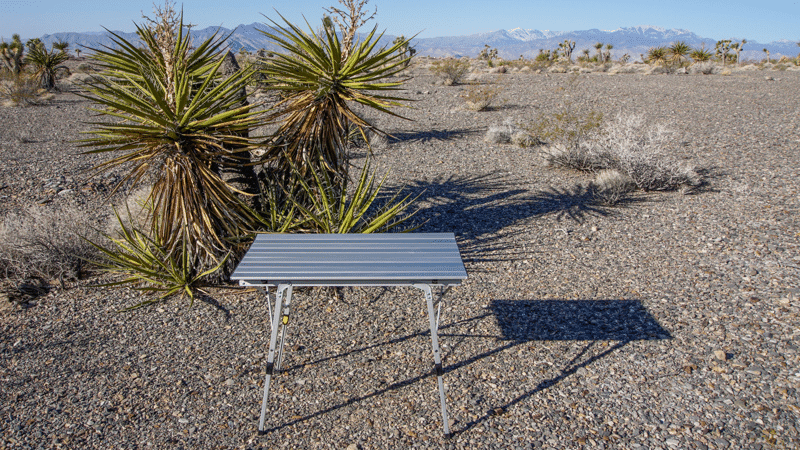Whether you’re in a small backpacking tent or a large canvas tent for fishing, hunting, or simply enjoying the outdoors with the family, it’s important to stay warm to enjoy the trip.



From personal experience, I think the best times to camp are on the shoulder seasons of April/May and September/October.
It provides pleasant hiking and activity weather, but at the same time, it tends to be colder at night. It’s important to know how to stay warm while tent camping in those environments so you can enjoy the entire trip, not just the day-time activities!
So let’s discuss to enjoy the views of snow covered mountains or the fall colors while not freezing all night!
All of the ideas below are based on two basic principles:
- Trapping Heat.
Your body generates heat. You have to limit the amount of this heat that escapes your sleeping bag. - Generating Heat
If you can’t trap enough heat to keep you warm, then you need to generate heat. This can be from propane, batteries, electricity, or even chemically (hand warmers).
Some of these tips are going to be obvious, but I will add my non-obvious information from my personal experience.
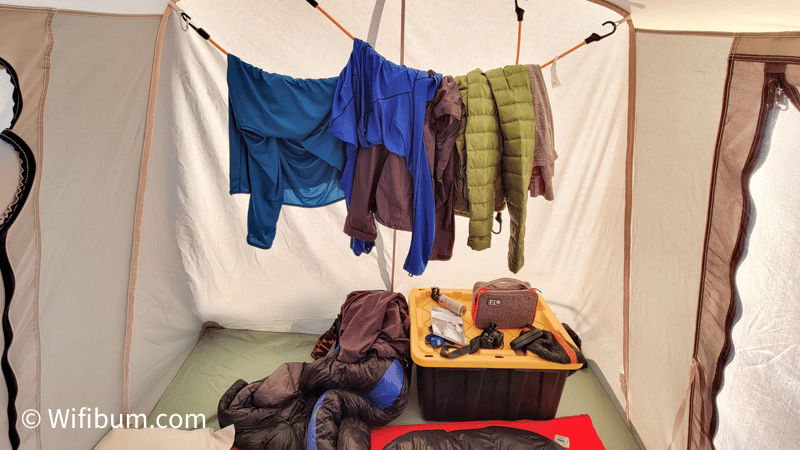
An example is knowing where the sun will rise and setting up your tent so it receives that warmth. Being in the shadow of a mountain or trees can delay the time your tent warms up in the morning.
Let’s get started.
I’m going to cover two primary issues:
- How to stay warm in a tent
- How to heat a tent without electricity
How to Stay Warm in a Tent
Staying warm in a tent involves proper preparation and knowing some simple concepts.
- Use a Proper Sleep System
- Know how to layer clothing in cold weather (I have a full guide in this section!)
- Heat water bottles or use hand warmers
- Set up your tent in an area more conducive to warmth
- Block the Wind
- Use Blankets
- Use a Mr. Heater Buddy
- Use a Power Bank
- Covert to a Stove Tent
1. Using Proper Sleep System
When I’m sleeping in weather below 30 degrees F, this is what my set up looks like:
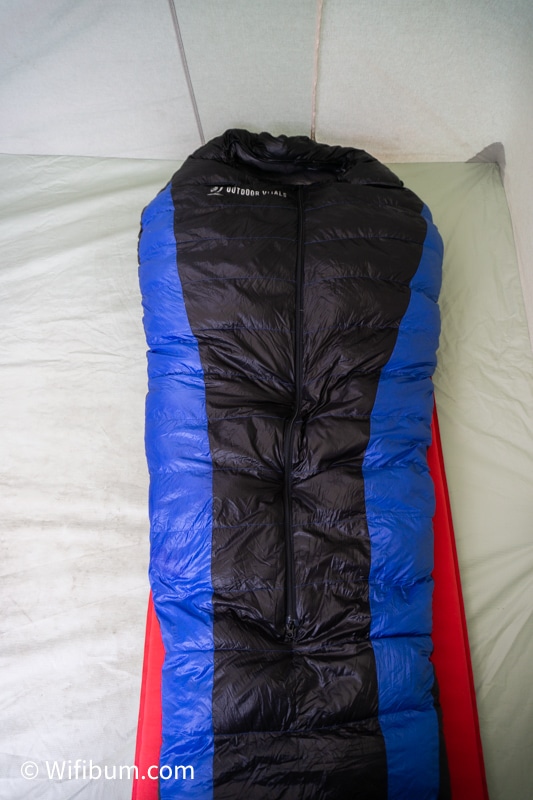
- A sleeping pad rated with an R-value of around 4 or higher (I use something like this in the XL version).
- A sleeping bag rated for at least 15 degrees.
- Sleeping bag ratings are not reliable. I always add 10 to 15 degrees to whatever the company rates it for.
- For example, I use a 15 degree bag and I’m barely warm in 25 to 30 degrees without wearing many layers.
- You can add a sleeping bag liner, but I find more bang for my buck by buying layers that are useful in multiple occasions than spending money on a limited-use sleeping bag liner.
2. Layer Your Sleeping Cloths Properly!
Proper layering is required knowledge when you begin to camp in cold weather.
I typically wear this in cold weather camping:
Head & Face
Wool hat with fleece lining
Wool buff that can cover my neck, chin, and part of my cheeks
Upper Body
- Base layer – wool or synthetic, not wool
- Medium long-sleeve – might have a quarter-zip or something, but not too bulky
- Medium to thick fleece – this is my “insulating layer” and I may stop there around 30F
- Down jacket – Yes, you sometimes need to sleep in a down jacket if your sleeping bag isn’t warm enough. I typically wear this when it’s in the 20s. Or sometimes I skip the fleece and wear the down jacket in the 30s.
- Rain jacket – I always have a rain jacket packed. It causes me to overheat when I’m hiking in it so it I’ve learned to also take advantage of the lack of ventilation to keep my body warmth locked in.
Lower Body
- Some type of non-cotton underwear
- Tight wool base layer – synthetic or wool (below 45F)
- Loose synthetic base layer – Some of the cheaper base layers tend to be loose and actually work well as a 2nd base layer. I use this method around 30F
- Sweat pants or thicker athletic pants – this is mostly so I don’t look like a complete clown at the campfire
- Rain pants or thick hiking pants – often these won’t fit over sweat pants, but they insulate better than sweatpants. I’ll sometimes wear my water-resistant hiking pants and be pretty warm with them.
Feet
- I’m a HUGE Darn Tough sock guy. All my hiking and running socks are by them. If it’s above 35F, I typically wear one of their medium to thick hiking socks.
- When it’s below 35F, I typically switch to Smartwool mountaineering socks. It feels like pillows for your socks and they are so warm.
- I should note that for my cold weather socks, I typically don’t hike or dirty them. I like to keep them as “sleeping gear” even though they are meant for hiking.
- The reason for this is the “fluff” and warmth get diminished overtime. The bottom of the sock will be flat and not as warm after hiking use. So, I always keep a pair of warm socks that are just for sleeping in and it seems to keep me warmer.
Bonus tip: the most likely things to get cold while you’re sleeping is your knees and feet. If you have any extra layers, throw them inside your sleeping bag by your feet or knees.
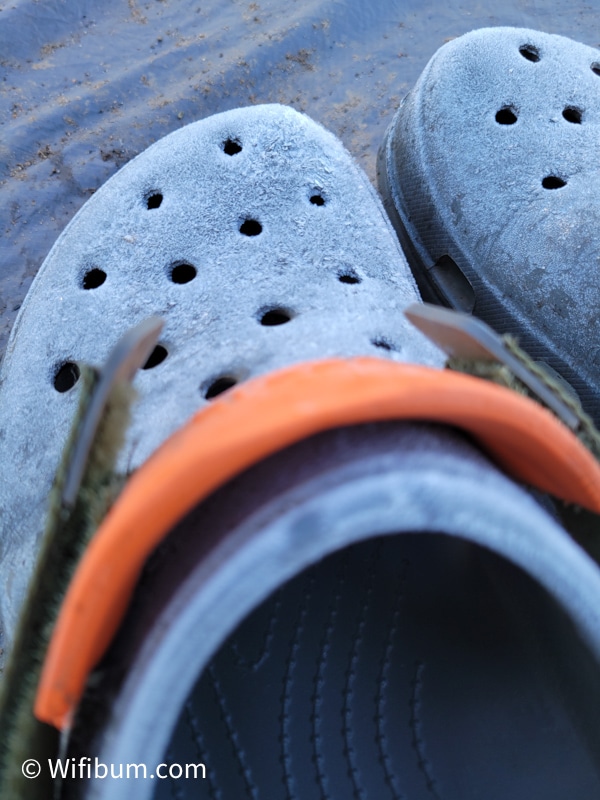
So, what if you don’t have the proper gear? It can be expensive and take a long time to accumulate all the proper gear.
What are some other methods?
3. Heat Water Bottles to Stay Warm in Your Tent
Heating water and pouring it into water bottles… and then stuffing those into your sleeping bag is an underrated way to stay warm through the night.
I’ve seen people even use rocks from the fire and put them in their tent, however, I have never personally done that one!
If you have a jetboil or any type of pot, simply heat up water over a fire, fill a water bottle or two, then stick them in your sleeping bag.
I wouldn’t recommend this with cheap, one-time use bottles because the lids are not always super secure. The worst thing would be having your water bottle open inside your sleeping bag!
Using a Nalgene or something similar is the best way to use this method.
If you don’t have a heat source for heating water, then you can bring hand warmers. They even sell large ones for feet and body you can add to stay warmer for longer.
4. Set Up Your Tent in Prime Locations
I did not discover this method until backpacking the Wind River Range of Wyoming in September. The days were beautiful, but the nights got very cold.
We camped at the edge of a lake and I woke up at about 7am FREEZING.
It’s hard to sleep when you’re super cold.
Eventually, we saw the sun starting to shine, but it was on the opposite side of the lake because a mountain was blocking the sun where we camped.
A group of 4 of us all grabbed our sleeping bags and walked over to the sunlight to bask in the sun until it hit our camp.
It took almost an hour longer for the sun to hit our tents compared to camping a short walk away.
The same can be true for camping in a forest vs the start of a meadow.
Also, camping near rivers and other bodies of water tend to be colder than camping inland.
5. Block the Wind
Using natural features such as rocks and trees and help block the wind and keep your tent warmer.
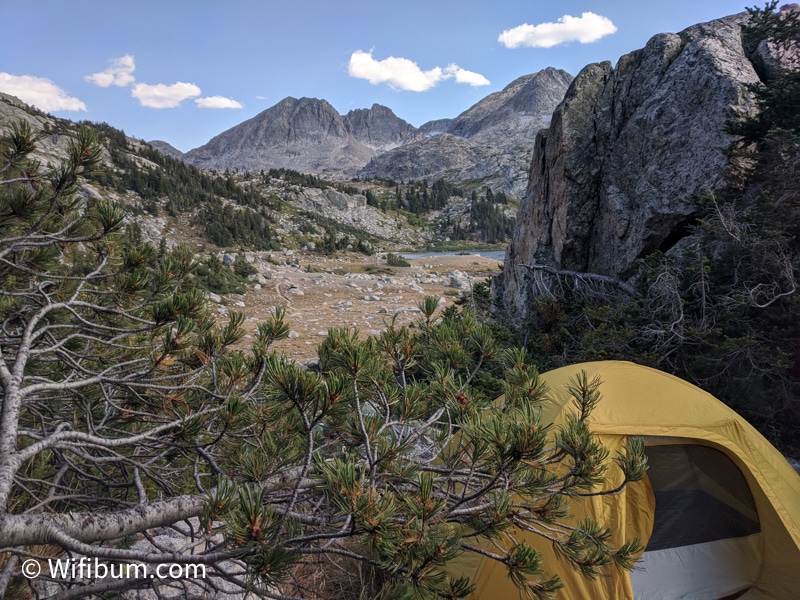
In rocky terrain, it’s not uncommon to build small rock walls to block wind. Many times existing sites already have these features to take advantage of.
6. Use Blankets
When you’re camping near your vehicle, bring lots of extra blankets in cold weather.
Simply toss them over your sleeping bag to retain more heat!
How to Heat a Tent without Electricity
- Use a Mr. Heater Buddy
- Use a Jackery to power a small outlet heater
- Use a tent adapted for a wood stove
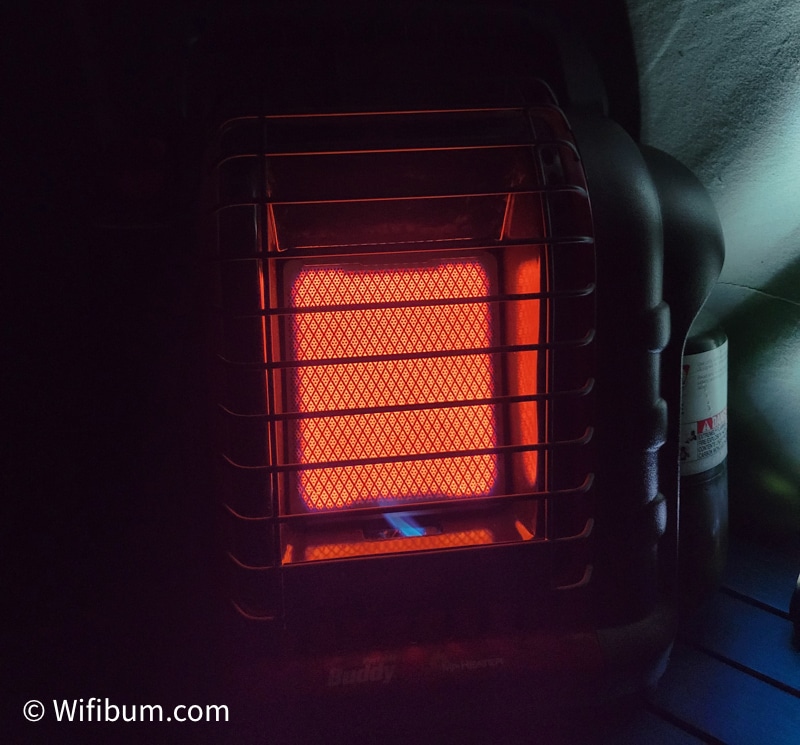
In order to heat a tent, you need fuel.
It could be in the form of propane, burning wood, or using a battery or electricity.
You also need a proper set up and take precautions with all of these methods. Many tent materials are very flammable. Use common sense!
7. Staying Warm with a Mr. Buddy Tent Heater!
I know, it’s technically a Mr. Heater Buddy, but where I’m from, he’s a Mr. Buddy Heater.
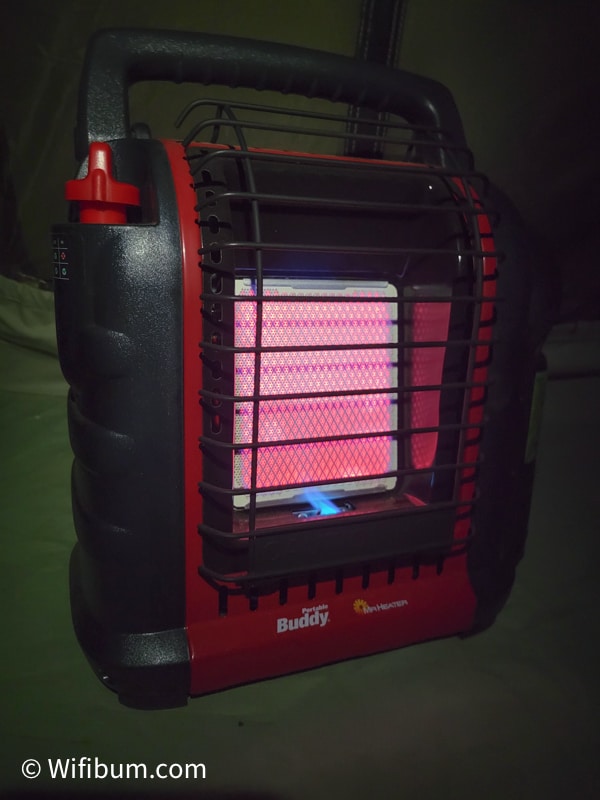
Mr. Heater Buddy uses propane fuel to heat small areas. It’s simple to use and has a low and high setting.
It has a metal gate in front of the flame and a built-in shutoff if it tips over.
I got to know this guy from my ice fishing days.
Everyone in the midwest is familiar with this product and loves it.
Using it on the ice is very different than using it in tents that are very flammable.
Although the Mr. Heater Buddy has safety built into it, you still need to exercise caution and common sense.
I would NOT use this in most tents unless they are spacious and you can get it off the ground.
I set my Mr. Buddy Heater on a small, metal camp table while using it. I never leave it on overnight or unattended.
In addition, I also use a battery-powered carbon monoxide detector. There’s never been a reading on it next to the Mr. Heater Buddy, but I also wanted to test it out and I’m a little paranoid.
You can warm up a tent 10 degrees with only a few minutes of the Mr. Buddy Heater. It’s perfect for early in the morning and while you’re changing clothes.
It’s also great for those days where it gets dark at 5pm, but you want to hang out in the tent comfortably.
8. Use a Power Bank to Warm A Tent
A large power bank such as a Jackery (link to Amazon) could be used for AC outlet-based heaters or things like an electric blanket.
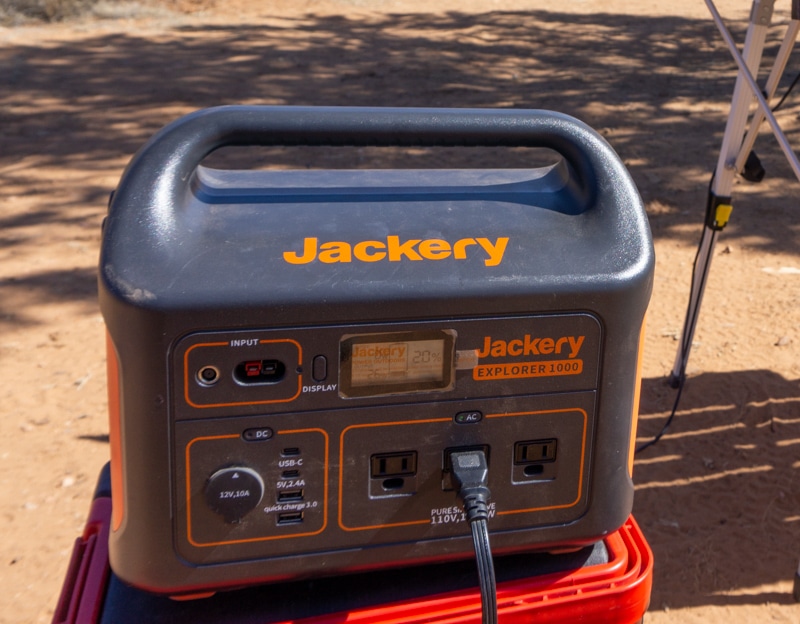
Full disclosure, I’ve never personally tried this because I’ve always used a Mr. Buddy Heater.
Test at your own risk!
9. Use a Stove Tent
Companies like Springbar (link to their site) have large canvas tents (learn more about canvas tents) that are specially made for using a wood burning stove inside.
These tents also require much more set up time and are probably more applicable for long-term camps in cold weather.
For example, if you’re on a week or longer cold terrain hunting trip, it would probably be worth investing in one of these tents. They are much more efficient than bringing tons of propane or other items.
Bonus tip: many Stove Tents and canvas tents are light in color. However, if you’re primarily camping in cold weather, you could use a darker tent.
Darker tents absorb more light/energy and increase the temperature of the tent material.
It’s not always noticeable, but combining this with the strategies above does make a difference.
Too Long, Didn’t Read Summary
Buy quality gear. Use the hot water bottle technique. And make the small purchase of the famous Mr. Heater Buddy (and use appropriately).
